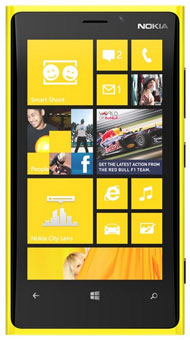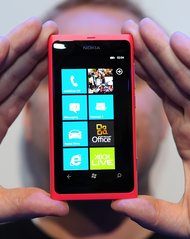Although sales of Nokia’s Lumia Windows smartphones increased by 27 percent, investors focused on the weakness in sales of its basic cellphones, which are the bulk of Nokia’s business.
Nokia, the former cellphone market leader that has tied its future to a smartphone collaboration with Microsoft, reported a 20 percent decline in quarterly sales, to 5.9 billion euros, or $7.7 billion. Shares in Nokia, which is based in Espoo, Finland, fell as much as 6 percent in Helsinki.
Stephen A. Elop, Nokia’s chief executive, said concerns about the progress of the company’s turnaround were overstated. He noted that Nokia’s financial results, and its smartphone business, showed continued signs of improvement.
“Yes, there are challenges, but we are actually pleased with the progress made so far,” Mr. Elop said in an interview.
Nokia trimmed its quarterly loss to 272 million euros, from 978 million euros a year earlier. “The problem is that there is still some uncertainty about whether the company’s survival strategy will work,” said Benedict Evans, an analyst at Enders Analysis in London, “and the market is seizing on any evidence of success or a setback.”
Two years into Nokia’s collaboration with Microsoft, the Finnish company is steadily building sales of the Lumia line, but those gains have not offset the erosion in sales of its basic models. Nokia sold 55.8 million of those so-called feature cellphones in the quarter, down from 70.8 million a year earlier, the lowest level in more than a decade, Mr. Evans said.
That part of the business has been shrinking as half the buyers of mobile phones shift to smartphones. Those remaining buyers are lured by low-cost Asian rivals, like MediaTek of China, which are flooding China and India, two of Nokia’s traditionally strongest markets, with $20 cellphones.
With its latest results, Nokia has posted an operating profit in three consecutive quarters, Mr. Elop said. The expansion of the Lumia line bodes well for the future, which will increasingly be shaped by the smartphone business. In the first quarter, Nokia sold 5.6 million Lumia phones, an increase from 4.4 million in the fourth quarter.
The average selling price of a Nokia smartphone rose 34 percent in the quarter, to 191 euros ($251).
In a conference call with investors, Mr. Elop, a former Microsoft executive, said he expected the rate of growth in Nokia’s smartphone sales to accelerate in the second quarter, with the pending introduction of a new model in the United States. Carolina Milanesi, an analyst with Gartner in San Jose, Calif., said Verizon Wireless was expected to begin selling a top-of-the-line Lumia handset this month.
“This phone is going to have a major positive impact on Nokia because Verizon Wireless is the market leader,” Ms. Milanesi said. “This will significantly boost U.S. distribution.”
Nokia already sells Lumia phones through ATT and T-Mobile USA.
Article source: http://www.nytimes.com/2013/04/19/technology/nokia-trims-its-loss-as-expected.html?partner=rss&emc=rss


